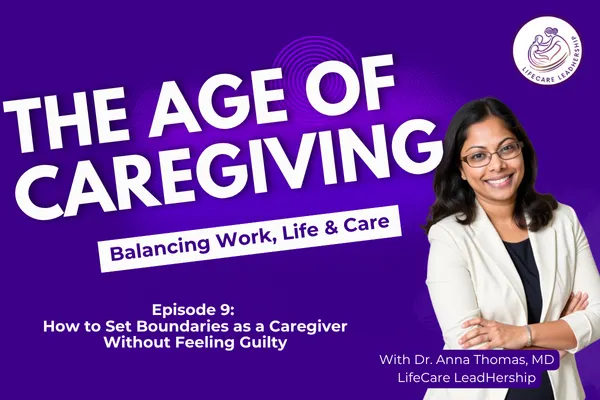
How to Set Boundaries as a Caregiver Without Feeling Guilty
When Caregiving Pushes Past Your Limits
You’ve been there:
Saying yes when you meant no.
Offering help you didn’t have the energy for.
Taking on just one more thing—because no one else would.
And afterward? The exhaustion. The resentment. The guilt.
If this sounds familiar, you’re not alone—and you’re not doing anything wrong. You’re carrying more than most people realize, and you’re trying to do it with compassion.
But here’s the truth:
Boundaries are not betrayal.
They’re protection.
Not just for you—but for the people you care for. Because when you burn out, everyone suffers.
The 3-Step Approach to Setting Boundaries Without Guilt
In my Thrive & Lead coaching program, I teach a method that blends clarity, communication, and compassion—so you can set boundaries without drowning in guilt.
Step 1: Clarify Your Non-Negotiables
You can’t set a boundary until you know what you’re protecting.
Start with reflection. Ask yourself:
What time of day do I need to protect for rest or focus?
What are my top three personal priorities right now?
What activities or conversations drain me the fastest?
Examples of non-negotiables:
No phone calls after 8 PM
One full day a month without caregiving duties
A limit on how many appointments you coordinate each week
This isn’t about being rigid.
It’s about being honest.
Boundaries begin with:
“This is what I can carry right now—and this is what I can’t.”
Step 2: Use Scripts That Lighten the Emotional Load
Saying no—especially to people you love—is hard.
That’s where boundary scripts help.
They reduce the emotional weight and eliminate the need to overexplain.
Here are a few caregiver-tested examples:
“I want to help, but I need to do it in a way that’s sustainable. Here’s what I can offer right now…”
“I’m not available for that today, but I can check in later this week.”
“I’ve learned that when I say yes to everything, I burn out. And I want to show up with energy, not resentment.”
These are rooted in clarity—not confrontation.
They don’t diminish your care.
They preserve it.
And the more you practice them, the more confident—and less guilty—you’ll feel.
Step 3: Redefine What “Caring” Means
This is where the guilt starts to dissolve—when you challenge the story you’ve been telling yourself.
Saying no to a request is not saying no to the relationship.
It’s saying yes to sustainability.
You can:
Be loving and still have limits
Be generous and say, “Not today”
Be a good daughter, sibling, partner, or friend—and still protect your peace
Every strong caregiver you admire?
They have boundaries.
The only difference is—they’ve practiced holding them.
A Real Example: Nia’s Story
Nia was caring for her father with dementia while running a busy law practice. She said yes to every task, every request her siblings passed off, every crisis.
She kept rearranging her schedule—until the resentment became louder than the guilt.
In our coaching sessions, we started with one boundary: Evenings were off-limits. That time was sacred for rest and recharge.
At first, she felt guilt.
But by the second week?
She felt relief.
Her father still got the care he needed.
Her siblings adjusted.
She showed up to work more present.
And she stopped resenting the role she once felt trapped in.
What You Can Do Next
Ready to build boundaries that stick—and feel good doing it?
✅ Free Workshop – From Caregiver to Care Leader
Learn how to set limits with clarity and confidence. Walk away with scripts, mindset shifts, and practical tools.✅ Book – Balancing Care While Working
Includes real-life examples, mindset coaching, and boundary-setting exercises.✅ Coaching Program – Thrive & Lead
Weekly support, accountability, and structure to help you live the boundaries you set.
More tools, books, and resources are available at LifeCareLeadHership.com.
Explore More from The Age of Caregiving™
🎧 Listen on Buzzsprout: https://www.lifecareleadhership.com/podcast
📺 Watch on YouTube: https://www.youtube.com/@ageofcaregiving
📝 Read more on our Blog: https://lifecareleadhership.com/ageofcaregiving
Final Word
Setting boundaries doesn’t make you selfish.
It makes you sustainable.
And the most loving thing you can do as a caregiver?
Protect the part of you that makes all this care possible.
You’ve got this.
And I’ve got you.
The views and opinions expressed in this post are solely my own and do not reflect the views of any past or present employer of Dr. Thomas. This content is for educational and informational purposes only and is not intended as medical or legal advice.
